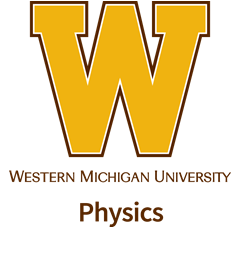Speakers
Mr
Jérôme Deprince
(Physique Atomique et Astrophysique, Université de Mons - UMONS, B-7000 Mons, Belgium)Dr
Patrick Palmeri
(Physique Atomique et Astrophysique, Université de Mons - UMONS, B-7000 Mons, Belgium)
Description
The observed widths and shifts of X-ray emission K-lines from accreting black holes imply that they are formed in a region very close to the compact object [1]. The intensity of these lines can give some insight into the effects of special and general relativity in the emitting region as well as information about some properties of the compact object itself. Magnetohydrodynamics simulations of accreting black holes computed by Schnittman *et al.* [2] reveal that the plasma conditions in such an environment should be characterized by an electronic temperature ranging from $10^5$ to $10^7$ K and an electronic density ranging from $10^{18}$ and $10^{21}$ cm$^{-3}$. Such physical conditions may affect the atomic structure and processes corresponding to the ionic species present in the plasma.
The main goal of the present work is to estimate the effects of plasma environment on the atomic parameters associated with the K-vacancy states in cosmologically abundant elements as oxygen ions within the astrophysical context of accretion disks around black holes. In this purpose, multiconfiguration Dirac-Fock computations have been carried out for these ions by considering a time averaged Debye-Hückel potential for both the electron-nucleus and electron-electron interactions in order to model the plasma environment, using a combination of the GRASP92 [3] and of the RATIP [4] codes.
A new set of results related to the plasma environment effects on ionization potentials, transition energies and radiative emission rates is reported for all the ionization stages of oxygen, from O I to O VII. The variations due to the plasma environment effects which have been computed for these parameters, relatively to the isolated ion, are in very good agreement with those obtained by another independent computational approach, namely the Breit-Pauli relativistic approximation as implemented in the AUTOSTRUCTURE code [5,6]. Our results predict that the ionization potentials are lowered by several eV and that the transition wavelengths are slightly redshifted, whereas no significant variation have been observed for the radiative rates.
1. C.S. Reynolds and M.A. Nowak, Phys. Rep. 377, 389 (2003)
2. J.D. Schnittman, J.H. Krolik and S.C. Noble, Astrophys. J. 769, 156 (2013)
3. F.A. Parpia, C. Froese Fischer and I.P. Grant, Comput. Phys. Commun. 94, 249 (1996)
4. S. Fritzsche, Comput. Phys. Commun. 183, 1523 (2012)
5. N.R. Badnell, J. Phys. B : At. Mol. Opt. Phys. 30, 1 (1997)
6. N.R. Badnell, Comput. Phys. Commun. 182, 1528 (2011)
Authors
Mr
Jérôme Deprince
(Physique Atomique et Astrophysique, Université de Mons - UMONS, B-7000 Mons, Belgium)
Dr
Patrick Palmeri
(Physique Atomique et Astrophysique, Université de Mons - UMONS, B-7000 Mons, Belgium)
Co-authors
Dr
Claudio Mendoza
(Department of Physics, Western Michigan University, Kalamazoo, MI 49008, USA)
Dr
Javier Garcia
(Department of Astronomy, California Institute of Technology, Pasadena, CA 91125, USA)
Dr
Pascal Quinet
(Physique Atomique et Astrophysique, Université de Mons - UMONS, B-7000 Mons, Belgium)
Prof.
Stephan Fritzsche
(Helmholtz Institut Jena, 07743 Jena, Germany)
Dr
Timothy R. Kallman
(NASA Goddard Space Flight Center, Code 662, Greenbelt, MD 20771, USA)
Dr
manuel bautista
(Department of Physics, Western Michigan University, Kalamazoo, MI 49008, USA)

